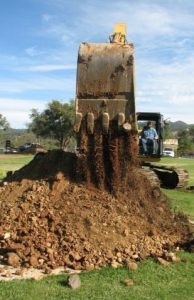“Remember soil is not dirt. Soil is live organic matter teeming with microbial life!”
— Farmer’s Almanac
How’s this for a quick and dirty (pun intended) way to check the health of your garden soil: “Use a shovel to dig up about 1 cubic foot of soil. Put the soil on a piece of cardboard, break it apart, and look for earthworms. If your soil is healthy, you should find at least 10 earthworms!” (again, the Farmer’s Almanac).
If you want a thriving garden, the place to start is with the soil itself. And a great time to improve your soil is over fall and winter. Why? Because adding nutrients and amendments now gives the earthworms, microbes and weather itself more time to work them in deeper by spring.
There are three ways to build healthier soil: improve its texture/structure, add nutrients, and alter the pH.
Soil Texture/Structure
Your soil’s texture and structure affect how water, air and nutrients move through the soil. Texture is how soil feels: coarse (sandy), medium (loamy) or fine (clay). While texture refers to the relative proportion of each element in a soil, structure refers more to how those basic elements are arranged. Each soil type has its advantages and disadvantages.
Our rocky, clay-heavy soil is hard to dig and often presents problems with drainage; but of all the soils, it’s typically richer in nutrients and holds moisture better. Loamy soil is often ideal in terms of texture, but might be lacking in nutrients. Sandy soil has excellent drainage, but because of that, doesn’t hold nutrients well.
The best amendment for most soil is organic matter: compost, leaf mold, aged manures, peat moss, grass clippings, rice hulls, worm castings, etc. For heavy clay soil, you can also add vermiculite, perlite or gravel to quickly improve drainage.
Research has shown that for existing plants in your garden and new plantings, it’s best to add a couple of inches of organic matter on top of the soil rather than tilling it in. Tilling, especially when soil is wet, is actually harmful to the beneficial ecosystem in the soil. So, put the amendments on top and let the earthworms, microorganisms, biochemistry and winter weather do the work for you.
Nutrient Levels and pH
The most common soil nutrients are nitrogen, phosphorus and potassium—the NPK ratio you see on fertilizer labels—with calcium, magnesium and other minerals in the mix. Many foothill soils are low in nitrogen and phosphorus. For low nitrogen levels, consider adding aged poultry manure, fish emulsion or bone meal. Nitrogen leaches easily from soil, so applying it in slow-release forms is best. For soils low in phosphorus, add bone meal, rock phosphate or superphosphate.
Foothill soils are also likely to be deficient in calcium. Agricultural limestone, oyster shell lime or manure can help. (Dolomite limestone adds excessive magnesium to soil and so is not recommended for foothill soils, which are already high in magnesium.)
Your soil’s pH is a measure of how acidic or alkaline it is. Foothill soils tend to be slightly acidic, so plants that prefer normal to acidic soil do best. To make your soil even more acidic, try adding peat moss. For a more alkaline soil, add limestone or chicken manure.
No matter the amendments you use, be sure to do two things before using them: research the plant(s) you have or plan to add to determine their ideal soil; and always read the labels on fertilizers.
So, improve your soil now and come spring, you can just pop those new posies into the ground without having to make a mad dash to the nursery for “garden soil” or compost!
Rachel Oppedahl is a University of California Cooperative Extension Master Gardener of Tuolumne County.

